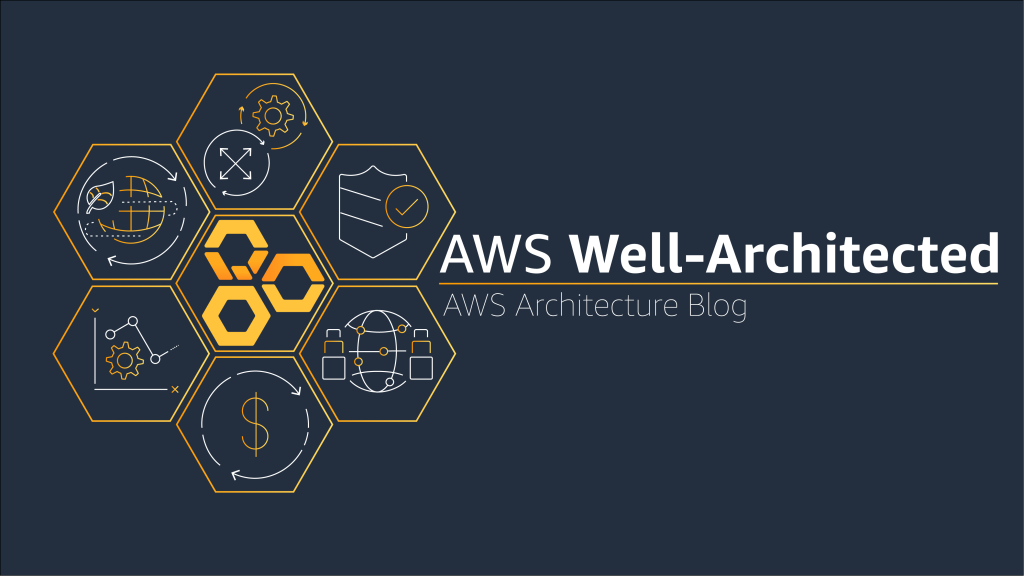The Architectural Elegance: A Creative Dive into AWS Well-Architected Framework
 Sumit Mondal
Sumit MondalTable of contents

Introduction
In the ever-evolving landscape of cloud computing, architects and engineers continually seek ways to design systems that are not only robust but also scalable, secure, and performant. Enter the AWS Well-Architected Framework, a guiding light in the cloud, providing a blueprint for building reliable and efficient systems. In this blog, we'll embark on a creative journey to explore the key pillars of the AWS Well-Architected Framework and demonstrate its principles through a hands-on example.
Pillars of Well-Architected Framework
The AWS Well-Architected Framework is built on five key pillars: Operational Excellence, Security, Reliability, Performance Efficiency, and Cost Optimization. Let's delve into each of these pillars to understand their significance.
- Operational Excellence
Operational Excellence in the AWS Well-Architected Framework emphasizes the importance of automating processes, documenting procedures, and constantly improving operations. It encourages organizations to adopt best practices for managing and evolving systems.
Hands-on Example: Automating Deployment with AWS CodePipeline
Consider a scenario where you want to deploy a web application on AWS. By leveraging AWS CodePipeline, you can automate the entire deployment process. This continuous integration and continuous deployment (CI/CD) service streamline the code delivery process, ensuring faster and more reliable releases.
- Security
Security is paramount in the cloud, and the Security pillar of the AWS Well-Architected Framework focuses on protecting data, systems, and assets. It advocates for implementing robust identity and access management, conducting regular security audits, and encrypting sensitive data.
Hands-on Example: Implementing AWS Identity and Access Management (IAM)
In our hands-on example, we'll demonstrate how to use AWS IAM to control access to AWS services and resources. By creating IAM roles, policies, and users with the principle of least privilege, you can ensure that only authorized entities have access to your resources.
- Reliability
Reliability is all about ensuring a system's ability to recover from failures and meet customer demands. This pillar in the Well-Architected Framework emphasizes the need for fault tolerance, monitoring, and quick recovery strategies.
Hands-on Example: Building a Highly Available Architecture with Amazon EC2 Auto Scaling
To illustrate the reliability pillar, we'll implement Amazon EC2 Auto Scaling. This service automatically adjusts the number of Amazon EC2 instances in a group to maintain application availability and scale based on demand. By distributing instances across multiple Availability Zones, you enhance the fault tolerance of your application.
- Performance Efficiency
In a world where user experience is key, Performance Efficiency is crucial. This pillar advocates for selecting the right resources for your workload, monitoring performance, and making informed decisions to optimize efficiency.
Hands-on Example: Leveraging Amazon CloudFront for Content Delivery
To showcase performance efficiency, we'll integrate Amazon CloudFront into our web application architecture. By using a content delivery network (CDN), you can distribute content globally, reduce latency, and enhance the overall performance of your application.
- Cost Optimization
Cost Optimization is about avoiding unnecessary expenses and maximizing the value of your cloud investments. The Well-Architected Framework encourages organizations to analyze and optimize costs continuously.
Hands-on Example: Implementing AWS Budgets and Cost Explorer
Let's explore how to set up AWS Budgets to monitor and control costs effectively. Combined with AWS Cost Explorer, you can gain insights into your spending patterns, identify areas for optimization, and ensure that your cloud resources are used efficiently.
Conclusion
The AWS Well-Architected Framework serves as a compass, guiding architects and engineers to build cloud architectures that meet the highest standards. By incorporating operational excellence, security, reliability, performance efficiency, and cost optimization into our hands-on example, we've showcased the practical application of these principles.
As you embark on your cloud journey, remember that the AWS Well-Architected Framework is not a one-size-fits-all solution but rather a set of best practices that can be tailored to your specific needs. By embracing this framework, you'll be better equipped to architect solutions that stand the test of time in the dynamic world of cloud computing.
Subscribe to my newsletter
Read articles from Sumit Mondal directly inside your inbox. Subscribe to the newsletter, and don't miss out.
Written by

Sumit Mondal
Sumit Mondal
Hello Hashnode Community! I'm Sumit Mondal, your friendly neighborhood DevOps Engineer on a mission to elevate the world of software development and operations! Join me on Hashnode, and let's code, deploy, and innovate our way to success! Together, we'll shape the future of DevOps one commit at a time. #DevOps #Automation #ContinuousDelivery #HashnodeHero